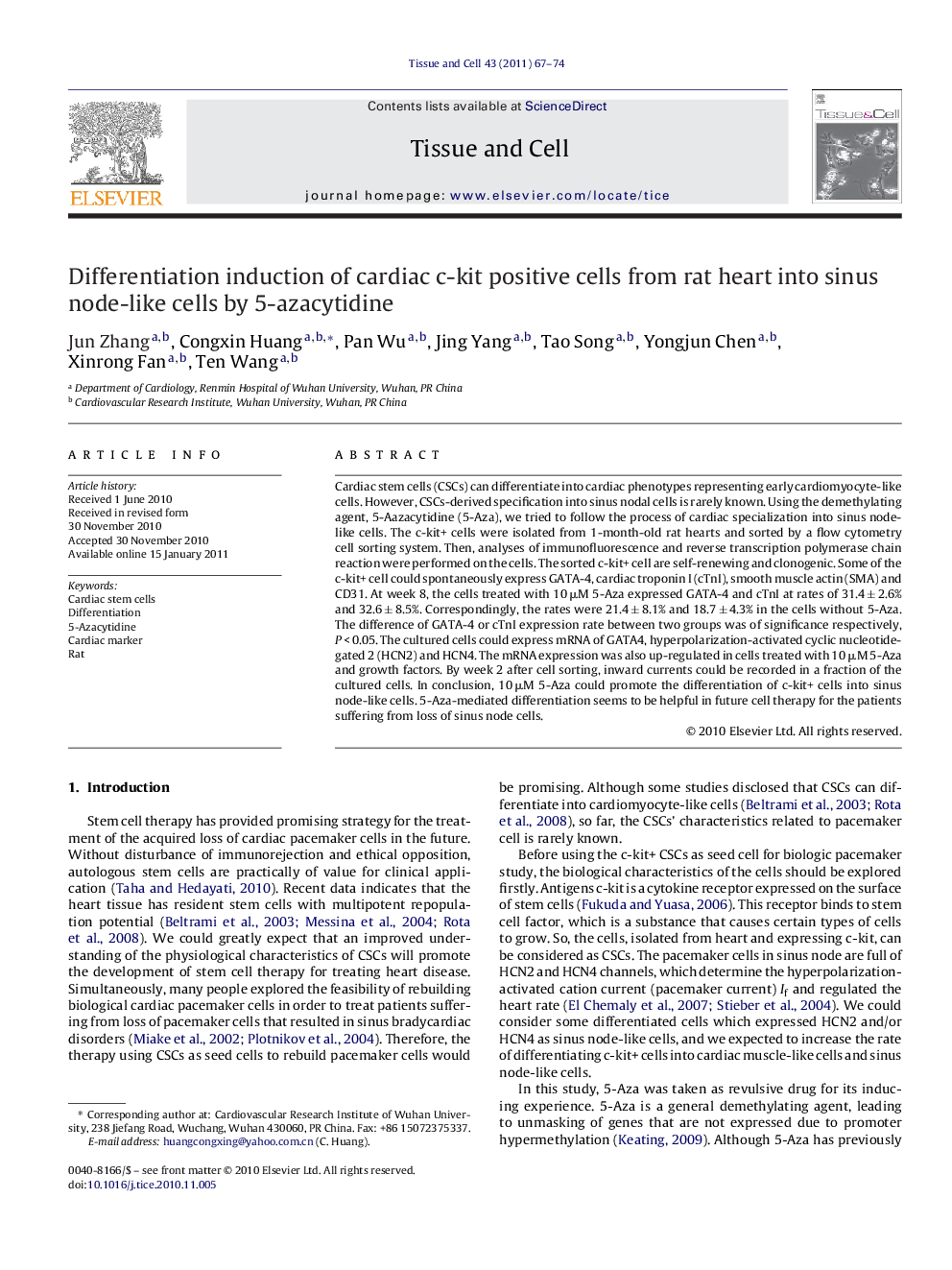| Article ID | Journal | Published Year | Pages | File Type |
|---|---|---|---|---|
| 10959685 | Tissue and Cell | 2011 | 8 Pages |
Abstract
Cardiac stem cells (CSCs) can differentiate into cardiac phenotypes representing early cardiomyocyte-like cells. However, CSCs-derived specification into sinus nodal cells is rarely known. Using the demethylating agent, 5-Aazacytidine (5-Aza), we tried to follow the process of cardiac specialization into sinus node-like cells. The c-kit+ cells were isolated from 1-month-old rat hearts and sorted by a flow cytometry cell sorting system. Then, analyses of immunofluorescence and reverse transcription polymerase chain reaction were performed on the cells. The sorted c-kit+ cell are self-renewing and clonogenic. Some of the c-kit+ cell could spontaneously express GATA-4, cardiac troponin I (cTnI), smooth muscle actin (SMA) and CD31. At week 8, the cells treated with 10 μM 5-Aza expressed GATA-4 and cTnI at rates of 31.4 ± 2.6% and 32.6 ± 8.5%. Correspondingly, the rates were 21.4 ± 8.1% and 18.7 ± 4.3% in the cells without 5-Aza. The difference of GATA-4 or cTnI expression rate between two groups was of significance respectively, P < 0.05. The cultured cells could express mRNA of GATA4, hyperpolarization-activated cyclic nucleotide-gated 2 (HCN2) and HCN4. The mRNA expression was also up-regulated in cells treated with 10 μM 5-Aza and growth factors. By week 2 after cell sorting, inward currents could be recorded in a fraction of the cultured cells. In conclusion, 10 μM 5-Aza could promote the differentiation of c-kit+ cells into sinus node-like cells. 5-Aza-mediated differentiation seems to be helpful in future cell therapy for the patients suffering from loss of sinus node cells.
Related Topics
Life Sciences
Agricultural and Biological Sciences
Agricultural and Biological Sciences (General)
Authors
Jun Zhang, Congxin Huang, Pan Wu, Jing Yang, Tao Song, Yongjun Chen, Xinrong Fan, Ten Wang,
